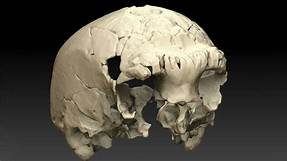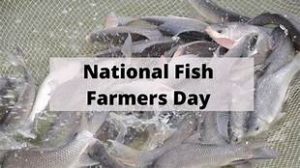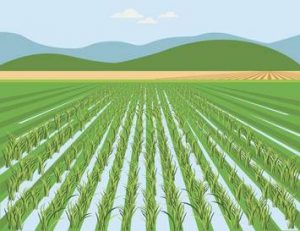Today Current Affairs: 12th July 2022 for UPSC IAS exams, State PSC exams, SSC CGL, State SSC, RRB, Railways, Banking Exam & IBPS, etc
Table of Contents
World Population Day:

World Population Day is observed on the 11th of July every year. The objective of the day is to increase the awareness of the people towards the worldwide population issues.
- World Population Day, which seeks to focus attention on the urgency and importance of population issues, was established by the then-Governing Council of the United Nations Development Programme in 1989.
- By a resolution in December 1990, the United Nations General Assembly decided to continue observing World Population Day enhance awareness of population issues, including their relations to the environment and development.
- The Day was first marked on 11th July 1990 in more than 90 countries.
- In 2011, the world reached a population of 7 billion. This year, the number will hit 8 billion.
- The theme for World Population Day 2022 is ‘A world of 8 billion: Towards a resilient future for all – Harnessing opportunities and ensuring rights and choices for all.
Wimbledon 2022:

In Tennis, Serbian star Novak Djokovic won Wimbledon 2022 after beating Australia’s Nick Kyrgios 4-6, 6-3, 6-4, 7-6 in London. Elena Rybakina of Kazakhstan clinched the Women’s Singles title.
- Novak Djokovic became the fourth player in the open era after Roger Federer, Pete Sampras, and Bjorn Borg to win four Wimbledon titles in a row.
- Djokovic has a total of seven Wimbledon titles with his last four titles coming in 2018, 2019, 2021, and 2022.
- It is Djokovic’s 21st Grand Slam title overall, putting him one behind record-holder Rafael Nadal.
INS Vikrant:

The fourth phase of Sea Trials for Indigenous Aircraft Carrier- Vikrant has been successfully completed during which integrated trials of majority of equipment and systems onboard were undertaken.
- Defence Ministry said, the ship’s delivery is being targeted by the end of this month, followed by commissioning of the ship in August this year to commemorate Azadi ka Amrit Mahotsav.
- The indigenous design and construction of Aircraft Carrier by Indian Navy and Cochin Shipyard Limited is a shining example in the Nation’s quest for AatmaNirbhar Bharat and Make in India Initiative with more than 76 per cent indigenous content.
- Maiden Sea Trials of IAC were successfully completed in Aug 2021.
- This was followed by second and third phases of Sea Trials in Oct 2021 and Jan 2022 respectively.
Drug, Medical Devices, And Cosmetics Bill-2022:

The Union Health Ministry has released the new draft ‘Drug, Medical Devices, and Cosmetics Bill-2022’ that separately defines medical devices.
- The government has sought comments, objections, and suggestions on the draft Bill over the next 45 days.
Key Highlights:
- Separate expert group: It has provision for the constitution of a separate expert group on medical devices.
- Central and state testing laboratories: It calls for the setting up of central and state medical device-testing laboratories on the lines of the network of drug-testing laboratories.
- Rules for online pharmacy: The draft Bill also suggests that the Central government formulate rules for regulating online pharmacies.
- Separate definitions for medical devices: The draft Bill has a separate definition for medical devices that bring under its ambit diagnostic equipment, its software, implants, devices for assistance with disabilities, life support, instruments used for disinfection, and any reagents or kits.
- The previous 1940 Act regulated medical devices as one of the four categories of “drugs”.
- ‘Medical devices technical advisory board’: It makes provision for the creation of a ‘medical devices technical advisory board’ on the lines of the existing drugs technical advisory board.
- This board will include medical professionals and also people with technical knowledge of the devices.
SDG Report 2022:

A recent UN SDG index says, all 17 SDGs, are in jeopardy due to the climate crisis, the COVID-19 pandemic and an increase in the number of conflicts across the world.
- The 2022 SDG Index is topped by three Nordic countries – Finland, Denmark and Sweden – and all top 10 countries are European countries.
- India ranked at 121.
Key Highlights:
- No improvement in performance: Performance on SDG 1 (No Poverty) and SDG 8 (Decent Work and Economic Growth) remain below pre-pandemic levels in many low-income countries (LICs) and lower-middle-income countries (LMICs).
- Slow progress on climate and biodiversity: Progress on climate and biodiversity goals is also too slow, especially in rich countries.
- Greenhouse gas emissions are set to rise 14 per cent over a decade.
- A 2025 peak followed by a 43 per cent decline by 2030 and Net 2050.
- The pandemic itself has emerged as one of the biggest threats to several SDGs, pointing at 15 million “excess deaths” directly or indirectly due to the novel coronavirus by 2021.
- Economic shocks due to the worldwide health emergency pushed 93 million into poverty in 2020 alone, undoing “more than four years” work at alleviating poverty.
- It also affected the education and healthcare services for millions.
- Immunization, for example, has dropped for the first time in a decade even as deaths from malaria and TB have risen.
- The pandemic and the Russia-Ukraine war have already led to a lowering of global economic growth projections by 0.9 percentage points, the statement highlighted, flagging the conflict for harming in more ways than one:
- Raising food and fuel prices
- Hampering global supplies and trade
- Roiling financial markets
The Oldest European Human Fossil Found:

A jawbone fragment discovered in northern Spain last month could be the oldest known fossil of a human ancestor found to date in Europe,
- The researchers said the fossil found at an archaeological site in the Atapuerca mountain range was about 1.4m years old.
- Until now, the oldest hominid fossil found in Europe was a jawbone found at the same site in 2007 that was determined to be 1.2m years old.
- Atapuerca holds one of the richest records of prehistoric human occupation in Europe.
Digital Nomad Visas:

Indonesia has announced “Digital Nomad Visas” for travellers, to attract more foreign tourists.
- Digital Nomads are people who work remotely while travelling to different places and spending their earned income in the country they are travelling to.
- Unlike regular remote workers, who tend to stay in one geographic area, digital nomads travel and explore while working.
- The Digital Nomad Visa would allow remote workers to stay in Indonesia, including Bali, tax-free.
- Indonesia aims to bring in over 3.6 million overseas travellers into the country over the next year to explore spiritual retreats as well as the eco-tourism of Indonesia.
- Italy (can stay in the country for up to 90 days without a visa), Antigua and Barbuda (for digital nomad visa for two years), Barbados (a year-long remote working visa)
22nd National Fish Farmers Day:

National Fisheries Development Board (NFDB) and the Ministry of Fisheries, Animal Husbandry and Dairying celebrated the 22nd National Fish Farmers Day (10th July 2022) to demonstrate solidarity with all fisher folk, fish farmers and concerned stakeholders throughout the country.
- National Fish Farmers Day is celebrated in the memory of scientists Dr K. H. Alikunhi and Dr H. L. Chaudhury.
- Both of them successfully demonstrated Hypophysation (technology of induced breeding) in Indian Major Carps (common name for several species of fish) on 10th July 1957.
- Aim:
- To recognise the accomplishments and contribution of fish farmers, aquapreneurs (entrepreneurs in the water sector) and fisherfolks in the growth of the fisheries sector in the country.
- To draw attention to changing the way the country manages fisheries resources to ensure sustainable stocks and healthy ecosystems.
National Fisheries Development Board:
- It was established in 2006 as an autonomous organization under the administrative control of the Ministry of Agriculture and Farmers Welfare.
- Now, it works under the Ministry of Fisheries, Animal Husbandry and Dairying.
- It aims to enhance fish production and productivity in the country and to coordinate fishery development in an integrated and holistic manner.
Oncolytic Virotherapy:

Researchers in the US have developed a novel strategy in Oncolytic Virotherapy (OV) to improve a cancer therapy that can kill tumour cells while leaving nearby healthy tissues intact.
- Earlier a Monoclonal Antibody trial was held in the USA, where 12 patients were completely cured of rectal cancer without requiring any surgery or chemotherapy.
- Oncolytic viruses can kill cancer cells while leaving nearby healthy cells and tissues intact.
- In oncolytic virotherapy, the treatment also exerts its influence by activating an antitumor immune response made of immune cells such as Natural Killer (NK) cells.
- However, sometimes those natural killers limit the oncolytic viruses, and so despite the exciting development in the OV field in recent years, there is room for improvement to tackle some limitations, including the relatively weak therapeutic activity and lack of means for effective systemic delivery.
- A region of the gene is deleted which shows to activate the signaling pathway that enables the virus to replicate in normal cells.
- It consists of a new oncolytic virus called FusOn-H2, based on the Herpes simplex 2 virus, (HSV-2), commonly known as genital herpes.
- Arming FusOn-H2 with a chimeric NK engager that can engage the infiltrated natural killer cells with tumour cells can significantly enhance the effectiveness of this virotherapy.
Conservation Of Ancient Buddhist Site:

Chaeological Survey of India (ASI) will conserve the Ancient Buddhist site on the bank of Bhima River near Kanaganahalli (forming part of Sannati site) in Kalaburagi district, Karnataka.
- The conservation project will reset the remains of Maha Stupa retrieved in the excavation to their original positions without much ornamentation and reconstructing of fallen portions of the Ayaka platforms using newly-fabricated bricks of the same size, shape and texture.
Findings of the Excavation:
- The Edicts of Ashoka are a collection of more than thirty inscriptions on the pillars, as well as boulders and cave walls, attributed to Emperor Ashoka of the Mauryan Empire who reigned from 268 BCE to 232 BCE.
- A Maha Stupa was discovered which was referred to as Adholoka Maha Chaitya (the Great Stupa of the netherworlds) in the inscriptions and, more significantly, the stone-portrait of Emperor Ashoka, surrounded by his queens and female attendants.
- The Maha Stupa is believed to have been developed in three constructional phases – Maurya, Early Satavahana and Later Satavahana periods stretching from 3rd Century B.C. to 3rd Century A.D.
- The Stupa is believed to have been destroyed in an earthquake.
- Stupa is one of the largest of its time, the stone-portrait is considered to be the only surviving image of the Mauryan Emperor which had the inscription ‘Raya Asoko’ in Brahmi on it.
- Other Findings:
- Sculptural rendering of Jataka stories.
- The Jatakas are an important part of Buddhist art and literature.
- They describe the previous existences or births of the Buddha (the Enlightened One) when he appeared as Bodhisattvas (beings who are yet to attain enlightenment or moksha), in both human and non-human forms.
- Shatavahana monarchs and certain unique depictions of Buddhist missionaries sent by Ashoka to different parts.
- 72 drum-slabs decorated with a variety of Dharma-Chakras.
- Sculptures of Yakshas and lion. Yakshas (male nature spirits) are personifications of the natural world.
- Brahmi inscriptions with varied paleographical features.
- Brahmi script is one of the oldest writing systems, having been used in the Indian subcontinent and Central Asia during the final centuries BCE and the early centuries CE.
What Is a Cloudburst?

“Highly-localised rains” in Amarnath, Jammu and Kashmir, caused flooding and led to the deaths of at least 16 people and injuries to more than 20 others.
- A cloudburst refers to an extreme amount of rain that happens in a short period, sometimes accompanied by hail and thunder, and this has a precise definition.
- The India Meteorological Department (IMD) defines it as unexpected precipitation exceeding 100mm (or 10 cm) per hour over a geographical region of approximately 20 to 30 square km
- They are more likely to occur in mountainous zones mainly because of terrain and elevation.
- A cloudburst occurs when moisture-carrying air moves up a hilly terrain, forming a vertical column of clouds known as ‘cumulonimbus’ clouds.
- Such clouds usually cause rain, thunder and lightning. This upward motion of the clouds is known as an ‘orographic lift’.
- These unstable clouds cause an intense rainstorm over a small area after becoming heavy enough and locked in the ridges and valleys between the hills.
- The energy necessary for the cloudburst comes from the upward motion of air. Cloudbursts mostly occur at elevations between 1,000-2,500 metres above sea level.
What Is Natural Farming?:

Prime Minister Addressed a Natural Farming Conclave, where he urged farmers to take up Natural Farming.
- Natural Farming is defined as a “chemical- free farming and livestock based”.
- Soundly grounded in agro-ecology, it is a diversified farming system that integrates crops, trees and livestock, allowing the optimum use of functional biodiversity.
- It holds the promise of enhancing farmers’ income while delivering many other benefits, such as restoration of soil fertility and environmental health, and mitigating and/or reducing greenhouse gas emissions.
- This farming approach was introduced by Masanobu Fukuoka, a Japanese farmer and philosopher, in his 1975 book The One-Straw Revolution.
- Internationally, Natural Farming is considered a form of regenerative agriculture—a prominent strategy to save the planet.
- In India, Natural farming is promoted as Bhartiya Prakritik Krishi Paddhati Programme (BPKP) under Paramparagat Krishi Vikas Yojana (PKVY).
- BPKP is aimed at promoting traditional indigenous practices which reduce externally purchased inputs.
NFSA Ranking 2022:

The first edition of the State Ranking Index for National Food Security Act (NFSA), 2013 was released.
- The index seeks to document the status and progress of the implementation of NFSA across the country and various reform initiatives after consultation with the states.
- It highlights the reforms undertaken by the States and Union Territories and creates a cross-learning environment and scale-up reform measures by all the States and Union Territories.
- The current index is largely focused on NFSA distribution and will include future buyouts, PMKGAY (Pradhan Mantri Garib Kalyan Anna Yojana) distributions.
- The index for ranking of States and UTs is built on three key pillars, which cover end-to-end implementation of NFSA through Targeted Public Distribution System (TPDS). These pillars are-
- NFSA- coverage, targeting and provisions of the Act
- Delivery platforms and
- Nutrition initiatives
General Category States:
- Odisha is ranked first followed by Uttar Pradesh and Andhra Pradesh in second and third position.
Special Category States:
- Tripura ranks top among the special category states (the North-eastern States, Himalayan States, and Island States).
- Himachal Pradesh and Sikkim are in second and third place, respectively.
Worst Performers:
- Punjab, Haryana and Delhi are among the states at the bottom five.




